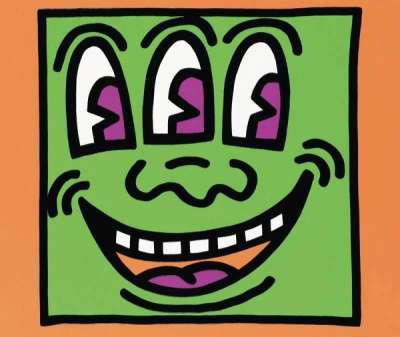
Angel

Angel
Signed Print
Keith Haring
£7,000-£10,500Value Indicator
$14,500-$22,000 Value Indicator
$13,000-$19,000 Value Indicator
¥70,000-¥100,000 Value Indicator
€8,000-€12,000 Value Indicator
$70,000-$110,000 Value Indicator
¥1,320,000-¥1,980,000 Value Indicator
$9,000-$14,000 Value Indicator
AAGR (5 years) This estimate blends recent public auction records with our own private sale data and network demand.
There aren't enough data points on this work for a comprehensive result. Please speak to a specialist by making an enquiry.
Medium: Screenprint
Edition size: 250
Year: 1990
Size: H 53cm x W 63cm
Signed: Yes
Format: Signed Print
TradingFloor
Track this artwork in realtime
Watch artwork, manage valuations, track your portfolio and return against your collection
Track auction value trend
Auction Results
| Auction Date | Auction House | Location | Hammer Price | Return to Seller | Buyer Paid |
|---|---|---|---|---|---|
| May 2024 | Bonhams New Bond Street | United Kingdom | |||
| April 2024 | Wright | United States | |||
| April 2023 | DuMouchelles | United States | |||
| September 2021 | Forum Auctions London | United Kingdom | |||
| December 2019 | Sotheby's New York | United States | |||
| June 2019 | Wright | United States | |||
| October 2014 | Bonhams San Francisco | United States |
Meaning & Analysis
Taken from Keith Haring’s Icons series (1990), this signed screen print Angel is a limited edition of 250. Using Christian iconography as his source material, Haring creates an uplifting image of a yellow-winged angel, depicted with dynamic movement and energy through his use of bold lines. Angel is demonstrative of the way Haring shapes religious source material to reflect contemporary concerns of his generation.
Much like fellow graffiti artist Jean-Michel Basquiat, Haring reuses particular symbols, all present in the Icons series, to produce a memorable pictorial language. The angel is an image used repeatedly by Haring, in works such as Marriage of Heaven and Hell (1984) and Anti-Nuclear Rally (1982), to speak to the ambiguities and socio-political injustices of the time. Angel overflows with paradoxical themes like life and death, good and evil, religion and sexuality, heaven and hell. This paradox is further exemplified when considered alongside other prints in the Icons series, notably Flying Devil.
Haring produces a set of recognisable positive symbols and clear-cut narrative views in his use of simplified form and repetition of images from previous works. Angel communicates the fragile line between life and death by emphasising the existence of heaven with the uplifting image of a dancing cartoon angel. This is particularly pertinent within the context of the AIDS epidemic, Haring’s own AIDS diagnosis in 1988 and his preoccupation with end of the world narratives amidst anti-nuclear debates. Indicative of his prevailing interest in the manipulative power of religious imagery, Angel becomes a biblical metaphor for heaven, life and, by extension, death.




